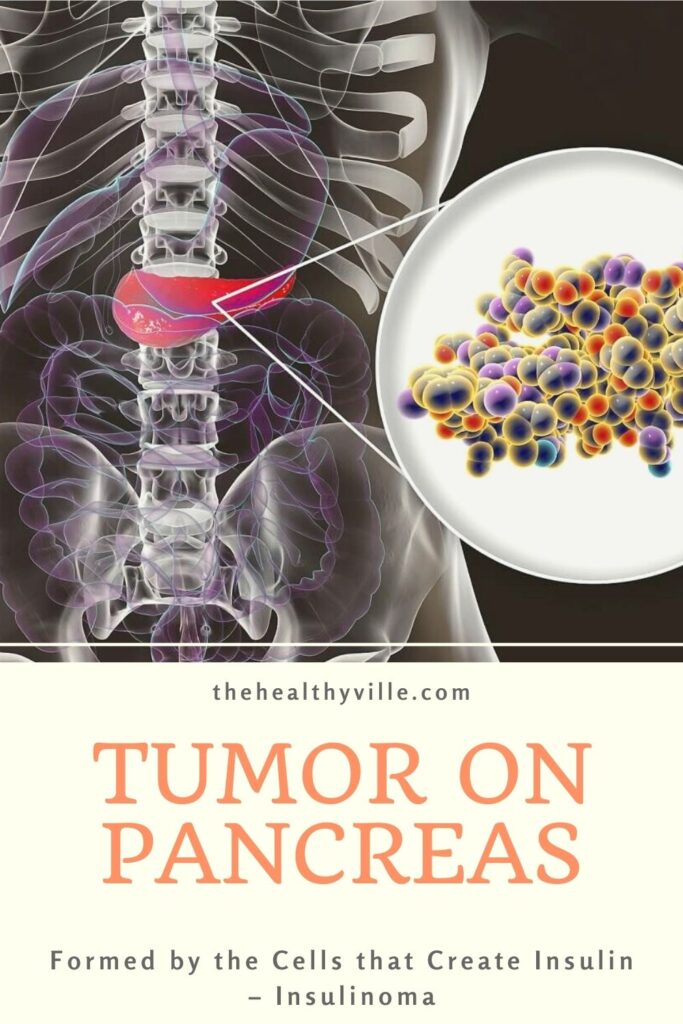The tumor on pancreas, formed by the cells that are responsible for insulin levels in the body is called insulinoma. Learn all the things you need to know about it!
An insulinoma is a tumor of the pancreas, formed by the type of cells responsible for the production of insulin. What are your symptoms? How is the diagnosis made? Find out!
Insulinoma is a type of tumor that is located in the pancreas. It manifests itself by episodes of low blood sugar, caused by high insulin production. In general, it is a benign and unique tumor.
Affected patients usually have low glucose when fasting. These episodes are known by the medical term “hypoglycemia.” What are its causes and treatments? Keep reading!
What is the tumor on pancreas insulinoma?
An insulinoma is a tumor of the pancreas, formed by the type of cells responsible for the production of insulin. Of every 10 people with this condition, in 9 there is a single tumor. However, most of the time they are benign, that is, they are not cancerous.
According to information published in the Encyclopedia of Endocrine Diseases, only 10% of cases are malignant. And although it can appear at any age, it frequently occurs in those who are between 40 and 50 years of age.
What are the causes?
The causes of an insulinoma are unknown. It is only known precisely that it is formed by the beta cells of the islets, which are responsible for producing insulin. These islets are evenly distributed throughout the pancreas.
Insulinoma symptoms
Remember that an insulinoma is an insulin-producing tumor. In this way, we can deduce what are the symptoms it produces. Excess insulin production causes the classic signs of a hypoglycemic event in people, which are usually the following:
- Weakness.
- Pallor.
- Fine trembling of the hands.
- Dizziness.
- Cold sweating.
- Palpitations.
In cases of severe hypoglycemia, in addition to the above symptoms, clinical manifestations such as:
- Visual disturbances.
- Confusion.
- Drowsiness.
- Sudden changes in behavior.
- Hypoglycemic coma.
It is important to note that in 7 out of 10 patients, these symptoms appear fasting.
How to diagnose insulinoma?
Most insulinoma patients have the classic symptoms of hypoglycemia fasting or after exercise. In rare cases, symptoms can occur after eating food. The medical diagnosis consists of two stages. The first requires that the patient meet the following three criteria:
- Hypoglycemia (blood glucose <50 mg / dL).
- Neurological symptoms of hypoglycemia (weakness, dizziness, confusion, drowsiness).
- Resolution of symptoms when administering glucose.
Then, in adult patients who are present the first two criteria, doctors perform laboratory tests during a fasting period of 72 hours. These blood tests include measurements of:
- Glucose.
- Insulin.
- Peptide C.
- Pro-insulin.
These last two substances tell us about the steps of insulin production, before it is converted into insulin in its active form. Its usefulness in diagnostic tests is very valuable, since it indirectly indicates the amount of insulin that is produced.
Locating the insulinoma
Once the doctor has determined – from the results of blood tests – that the most likely diagnosis is an insulinoma, the next step is to locate it. For this, imaging studies are carried out by:
- Computed axial tomography.
- Magnetic resonance.
- Ultrasound (not recommended because it is less accurate).
With the results of various studies in patients with this condition, 9 out of 10 have an insulinoma smaller than 2 centimeters in diameter. Once the doctor locates it, and as soon as they verify that it is a solitary tumor, you can start with the proper treatment.
Since it is a tumor that is producing and releasing insulin, the treatment is usually surgical. In some cases, medications are useful, but this will depend on the characteristics of the tumor or some medical condition of the person.
Once the tumor is located in the pancreas through imaging studies, surgery consists of removing the insulinoma along with the tissue of the pancreas that surrounds it. After the removal, the tissue sample goes for analysis under a microscope to check that it is not malignant.
It is important to remember that, as mentioned above, 1 in 10 insulinomas can be malignant. If so, there are medical treatment options.
What to remember about insulinoma?
It is very important to be clear that not all cases of hypoglycemia are due to an insulinoma. There are other causes that the healthcare professional must rule out before starting the diagnostic process for an insulin-producing tumor.
For this reason, the recommendation you have hypoglycemia is to go to a consultation to evaluate each particular case. Some hormonal imbalances can manifest as hypoglycemia in people who are not sick.
Doctors must also differentiate the Hypoglycemia in people who already have a diagnosis of diabetes. In non-diabetic patients, the causes of low blood sugar may be different in comparison to someone with type 1 or type 2 diabetes.
On the other hand, the use of some medications or the excessive consumption of alcohol can cause this lack of glucose control. Thus, in the face of any such condition, it is necessary to go to a doctor or specialist to receive a professional evaluation. Once you have the diagnosis, your doctor will determine the best treatment.
Don’t forget to SHARE everything you know about the tumor on pancreas insulinoma with your friends and family on your social networks!

